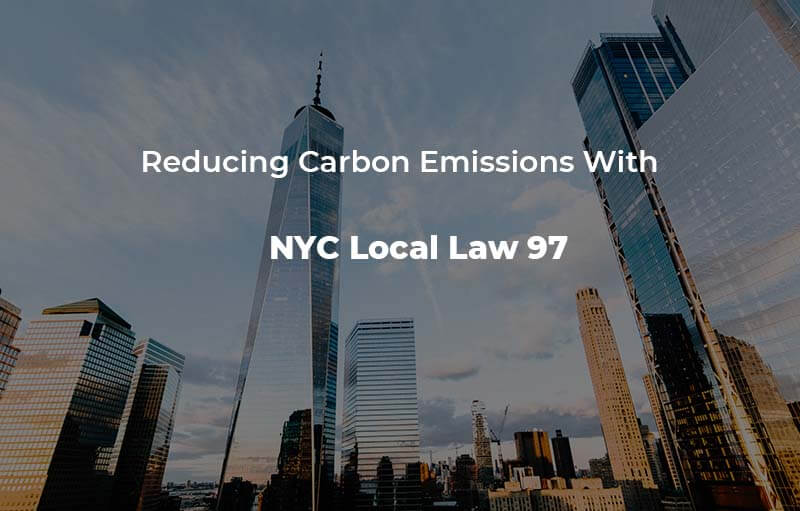
25 Feb Reducing Carbon Emissions with Local Law 97
The Climate Mobilization Act is a comprehensive piece of legislation enacted in May of 2019. It was designed to reduce New York City’s overall greenhouse gas emissions by 40% (2030), and up to 80% (2050). With being one year closer to the CMA, it’s high time the city is well prepared to act on the commitments.
GHG is the primary driver of the unprecedented rate at which climate change is taking place. Reducing emissions thus, from buildings is most significant as buildings contribute nearly three-quarters of citywide emissions owing to the consumption pattern vis-à-vis electricity use, HVAC, etc. The legislation with its package of bills aims to evolve these consumption patterns for optimum efficiency and via cleaner energy sources.
To facilitate the ambitious goal, a series of bills were passed. The centerpiece of the legislation is Local Law 97, among other laws. This is the part of the bill which specifically mandates what the greenhouse emissions limits are for each building type. More than 50,000 buildings will get impacted overall. In 2024, about 25% of those will be directly affected by the carbon emissions limit and practically every building in NYC by 2030. A typical commercial office building in midtown Manhattan of 250,000 sq ft. producing over 1.5 tons of stipulated carbon limits will be looking at a fine of over $100,000, and progressively for each year that follows.
Local Law 97 was enacted in 2019 as part of the Climate Mobilization Act to essentially place hard carbon caps on various building types – residential or commercial, that are larger than 25,000 sq ft. The law gets implemented in 2024, only to become more stringent with time to accomplish its grander goal of 80% carbon reduction by 2050. Many buildings have significantly reported being way over permissible limits requiring immediate intervention with retrofitting and alternative compliance.
Non-compliance is tied to harsh financial penalties that get worse over time. For example, a 1 million sq ft commercial office building that is just 10% above the 2024 carbon limit will be looking at a penalty of about $230,000 every year till 2029. From 2029 to 2030, the permissible carbon limit will be further reduced by a staggering 50% equating to a $1,200,000 penalty every year till 2034.
Importance of Carbon Reduction
1. Reducing Energy Expenses
The most immediate and apparent benefit is reduced energy expenditure. From problems as small as air leaks that usually go unnoticed but continue to burn pockets, to dangerous health risks instigated by carbon monoxide emissions released by faulty equipment are correct.
2. Increasing Property Value
Incorporating recommendations rendered by the experts ultimately make the building more efficient which increases the property’s worth. Planting solar panels, LEDs, performing weatherization does not just make the building greener and more efficient, but also hotter on the market.
3. Showing Environmental Concern
Showing some amount of environmental concern is required from businesses, buildings and all entities now not only from a brand-building point of view, although that’s non-negotiable, also to genuinely address the rocketing carbon levels.
